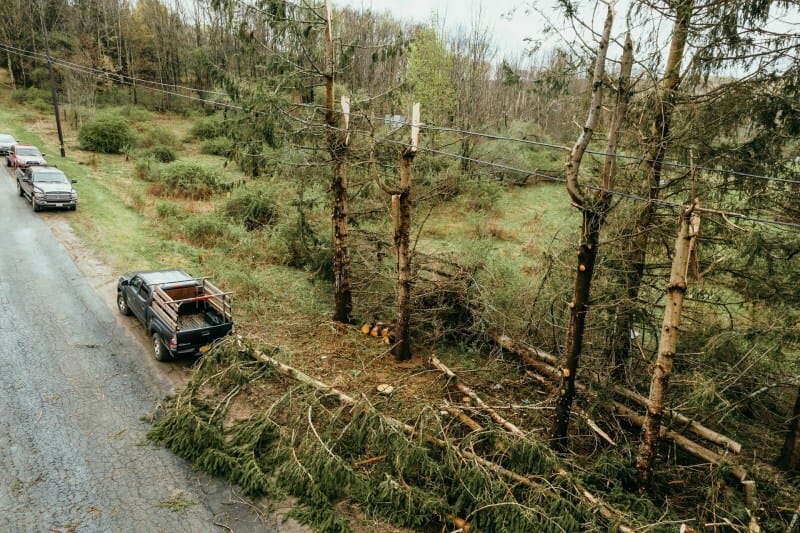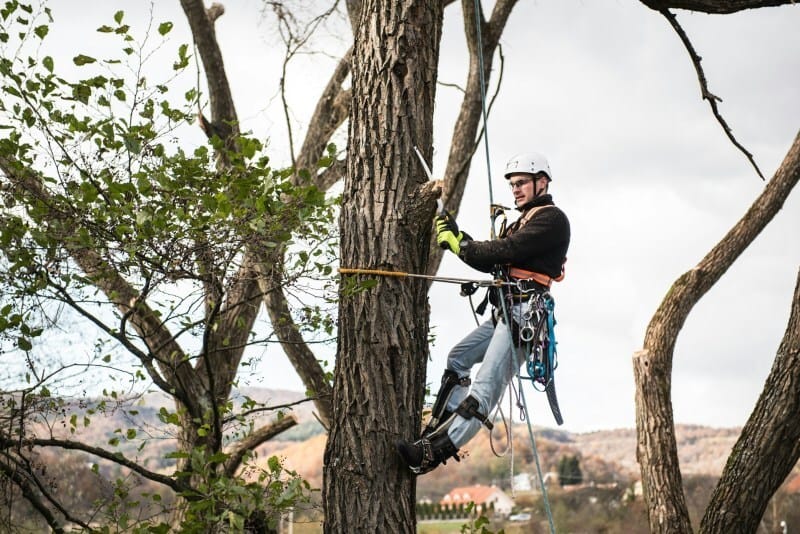Storms can wreak havoc on landscapes, leaving behind a trail of damaged trees and disrupted environments. Handling storm-damaged trees requires quick action, careful planning, and professional expertise. At A Plus Tree Emergency Services, the focus is on restoring safety and preserving the health of your trees after severe weather events. Their comprehensive approach ensures your property is protected while minimizing the impact on the surrounding environment.

Assessing the Damage
The first step in managing storm-damaged trees is a thorough assessment of the situation. Before taking any action, inspect your property to identify trees that have suffered damage. Look for visible signs such as broken branches, leaning trunks, or uprooted trees. Pay attention to hanging limbs or debris lodged in tree canopies, as these pose immediate safety hazards.
During the assessment, prioritize safety. Avoid standing beneath damaged trees or attempting to handle large limbs on your own. If power lines are involved, stay clear and contact professionals to manage the situation safely.

Determining the Next Steps
Once the extent of the damage is clear, determine whether the tree can be saved or if removal is necessary. Some trees may recover with proper care, while others pose ongoing risks to property and safety. Factors to consider include:
Tree Stability: Assess whether the tree’s root system and trunk remain intact. Severely leaning or uprooted trees are often beyond saving.
Health and Structure: Evaluate the extent of damage to the tree’s branches and canopy. Trees with significant loss of foliage or extensive structural damage may not recover.
Proximity to Structures: Consider the tree’s location relative to buildings, vehicles, or utility lines. Even a partially damaged tree can cause significant harm if it falls unexpectedly.

The Role of Professional Arborists
Dealing with storm-damaged trees often requires the expertise of certified arborists. At A Plus Tree Emergency Services, their team is trained to handle the complexities of post-storm recovery. From safe tree removal to restorative pruning, they provide tailored solutions that address each tree’s unique needs.
Certified arborists bring specialized knowledge to the table, ensuring that decisions are made with the tree’s health and safety in mind. They use advanced equipment and techniques to handle even the most challenging scenarios, from large fallen trees to hazardous limbs.

Restoring Damaged Trees
For trees that can be salvaged, restorative care is essential to promote recovery and prevent further issues. Key steps include:
Pruning Broken Branches: Removing damaged limbs helps prevent decay and encourages healthy regrowth. Cuts should be made cleanly and precisely to minimize stress on the tree.
Supporting Weakened Trees: Cabling or bracing can provide additional support to trees with compromised structure, reducing the risk of future damage.
Addressing Root Damage: If the tree’s root system has been disturbed, soil stabilization and proper irrigation can aid in recovery.
Monitoring Health: Regular inspections ensure that the tree is recovering as expected. Arborists can identify potential issues early, such as pest infestations or disease.

Emergency Tree Removal
In cases where a tree poses an immediate threat, prompt removal is the safest option. Emergency tree removal requires specialized equipment and expertise to prevent further damage to property or injury to individuals. A Plus Tree Emergency Services prioritizes safety and efficiency, ensuring that hazardous trees are removed quickly and without incident.
Their team also manages debris cleanup, leaving your property safe and tidy after the storm. By addressing the issue promptly, they help restore normalcy and reduce the risk of additional problems.
Preventing Future Damage
While storms are unpredictable, there are steps you can take to minimize the impact on your trees. Regular maintenance is key to ensuring their resilience during severe weather. Here are some proactive measures to consider:
Pruning and Trimming: Regularly removing dead or weak branches reduces the risk of breakage during storms.
Tree Health Monitoring: Healthy trees are better equipped to withstand high winds and heavy rain. Routine assessments can identify and address potential vulnerabilities.
Strategic Planting: Choosing appropriate tree species and planting locations can prevent future problems. Avoid planting trees too close to structures or power lines.
Bracing and Cabling: Providing additional support to vulnerable trees can help them withstand the forces of a storm.
The Importance of Timely Action
Acting quickly after a storm can make a significant difference in the outcome for your trees and property. Delaying necessary care can exacerbate damage, leading to more extensive repairs or even the loss of salvageable trees. Partnering with professionals ensures that your response is effective and safe.
A Plus Tree Emergency Services is equipped to handle all aspects of storm recovery, from assessment and removal to restoration and prevention. Their expertise and commitment to quality care make them a trusted partner in protecting your landscape.
Building Resilience in Your Landscape
Storms are a natural part of the environment, but with proper preparation and care, your trees can endure and thrive. By investing in regular maintenance and partnering with experts like A Plus Tree Emergency Services, you’re taking proactive steps to safeguard your property and preserve the beauty of your landscape.
Reach out to their team today to learn more about handling storm-damaged trees and how they can help protect your property for years to come.
The post How to Handle Storm-Damaged Trees appeared first on Moss and Fog.
